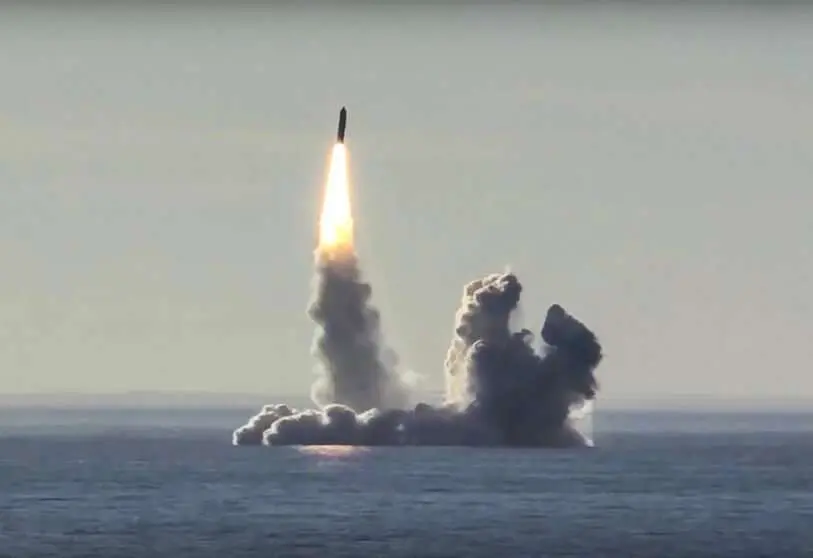The Russian response to the American nuclear posture

The publication of "The Button" (BenBella Books, 2020), the latest book by former US Defense Secretary William Perry, has coincided with the release of an official Russian document outlining the principles that update its nuclear deterrence doctrine. The perspicacity of the arguments developed by Perry is even more appreciated by reviewing the Russian document. Perry's central thesis is the need to proceed with the scheduled cancellation of the US nuclear programme, the maintenance of which, in his opinion, is due to the inertia of the Cold War mentality and the persistence of a set of vested interests.
His fundamental premise is that the effort to ensure an overwhelming response to a Russian nuclear strike by surprise increases the likelihood of technical or human error; a risk Perry proposes to mitigate by sharing authority for the use of the nuclear weapon with Congress, invoking the contradiction between the constitutional principle that gives him the right to declare a state of war, and the presidential prerogative to carry out a nuclear strike without mandatory consultation, just as in Russia. At the same time, William Perry advocates resisting the propensity, agreed to by both Republicans and Democrats, to respond to the modernization of China's and Russia's offensive nuclear capabilities by doing the same.
And it is precisely in the light of this dissent of Perry's that the content of the Russian document takes on special relevance, as it proposes an approach to nuclear defence that is far from being a symmetry of the American doctrine, which forces mental adjustments to be made by those responsible for US nuclear policy, and by extension, in the NATO member countries, precisely to avoid fatal errors of interpretation of intentions resulting from confirmatory tendencies, which can precipitate irreversible situations.
Despite its conciseness -it is barely six pages- the Russian document is the first important position after the American Nuclear Posture Review and its withdrawal from the Treaty on Intermediate-range Nuclear Forces, an agreement in force since 1987, which imposed limitations on the use of short- and medium-range missiles by its signatories. To a certain degree, the new Russian document engages in a dialectical exercise with the fundamental premise of the American position; the presumption that there is an intention on the Russian side to use force to modify the European map by making implicit and explicit use of nuclear threats to impose itself on its neighbours.
In this sense, the phraseology of the Russian document strives to convey the idea that Russian nuclear doctrine places a premium on deterrence over coercion, elaborating a "plausible denial" of the American inference that Russian doctrine informally formulates the limited use of nuclear weapons to force the abrupt cessation of a conventional conflict, on terms advantageous to Russia, applying a strategy of "escalating to win". Instead, the document develops the concept of "escalate to de-escalate", a limited use of nuclear weapons to resolve a failed conflagration that, without being explicitly included in the Russian strategy, is an option that appears with some profusion in Soviet military literature, as part of its methods of deterrence.
Clause XIX of the new Russian document stipulates the usefulness of reducing the risk of aggression against Russia by outlining the possibility of inflicting excessive costs on the adversary in certain circumstances. These include the possession of credible intelligence on the launching of missiles against Russian territory, which in Russian eyes would legitimize the use of nuclear weapons a priori and as a warning, without waiting for the threat itself to materialize. The next justification lies in the use of weapons of mass destruction against Russia. Thirdly, Russia would resort to 'controlled escalation' if the actions of a hostile enemy had the effect of rendering Russia's nuclear response capability useless, including in this chapter the effects of cyber attacks. Finally, the use of nuclear weapons is stipulated when conventional aggression threatens the very existence of the Russian state. The lowest common denominator of these stipulations is an emphasis on their defensive nature. So much so that the document modulates elements of the official rhetoric used in the past, changing the motivation for triggering a nuclear escalation from achieving 'favourable' to 'acceptable' conditions. In any case, the principles of the document are consistent with Putin's previous statements, in which he vehemently affirmed that the use of certain conventional weapons, of maximum precision and devastating effectiveness, against Russian military infrastructures, has a potential strategic effect comparable to that of a nuclear weapon.
The information available to us, 30 years after the end of the Cold War, reveals that neither Russians nor Americans ever seriously considered launching a surprise nuclear attack against their respective arch-enemies.
Both sides were fully aware that no one can win in a thermonuclear war. However, in the absence of a far-reaching nuclear treaty designed to control the proliferation realities of the 21st century, both the United States and Russia are approaching a new atomic race. As William Perry points out in his book, the distinction between tactical and strategic weapons on the one hand, and the launching of weapons as a warning, or as a pre-emptive strike, on the other, is very much an academic one, and is so tenuous and subjective that in a real conflagration scenario, going from one step to another, because of a military or political misinterpretation, is indeed unmanageable. The publication of the Russian document has the virtue of putting on the table that the entry into play of advanced conventional weaponry, produced thanks to industrial and technological supremacy, and characterised by its capacity to existentially compromise the opponent, far from incentivising the obsolescence of the old nuclear technology, is leading to conceiving new circumstances and scenarios in which to use it as an insurance policy, relatively affordable, against real or perceived risks.

